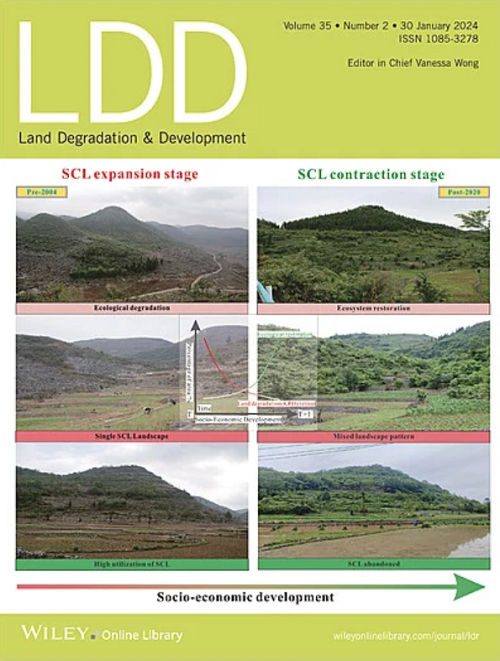Extraction of Desertification Information and Spatiotemporal Change in the Qinghai-Tibetan Plateau Based on Optimal Feature Space Combination
IF 3.6
2区 农林科学
Q2 ENVIRONMENTAL SCIENCES
引用次数: 0
Abstract
Desertification seriously threatens the ecosystem security of the Qinghai-Tibetan Plateau and the sustainable development of human society. The regional warming and humidification of the climate caused by global warming have brought uncertainty to the desertification development trend of the Qinghai-Tibetan Plateau. Therefore, it is crucial to pay close attention to the status and trends of desertification. In this study, Moderate Resolution Imaging Spectroradiometer (MODIS) vegetation indexes, albedo and topsoil grain size index (TGSI) data for the Qinghai-Tibetan Plateau were collected by Google Earth Engine (GEE) from 2000 to 2020, established an optimal monitoring model for desertification on the Qinghai-Tibetan Plateau using the feature space, and analyzed the spatiotemporal evolution patterns. The results show that the albedo-modified soil-adjusted vegetation index (MSAVI) model is the most suitable for desertification monitoring in the Qinghai-Tibetan Plateau region, with an overall accuracy of 88.07%. Generally, desertification on the Qinghai-Tibetan Plateau shows an overall improving trend from 2000 to 2020, with the proportion of non-desertification areas rising from 61% in 2000 to 70% in 2020. The desertification situation in most parts of the Qinghai-Tibetan Plateau shows a worsening rebound from 2010 to 2015, and then improves. There are constant transitions between adjacent levels of desertification land, with more active low desertification land and more stable bare desert. This study provides a simple, feasible, and highly accurate desertification monitoring method for the Qinghai-Tibetan Plateau region, and provides important data support for the driving mechanism and control measures of desertification.求助全文
约1分钟内获得全文
求助全文
来源期刊

Land Degradation & Development
农林科学-环境科学
CiteScore
7.70
自引率
8.50%
发文量
379
审稿时长
5.5 months
期刊介绍:
Land Degradation & Development is an international journal which seeks to promote rational study of the recognition, monitoring, control and rehabilitation of degradation in terrestrial environments. The journal focuses on:
- what land degradation is;
- what causes land degradation;
- the impacts of land degradation
- the scale of land degradation;
- the history, current status or future trends of land degradation;
- avoidance, mitigation and control of land degradation;
- remedial actions to rehabilitate or restore degraded land;
- sustainable land management.
 求助内容:
求助内容: 应助结果提醒方式:
应助结果提醒方式:


